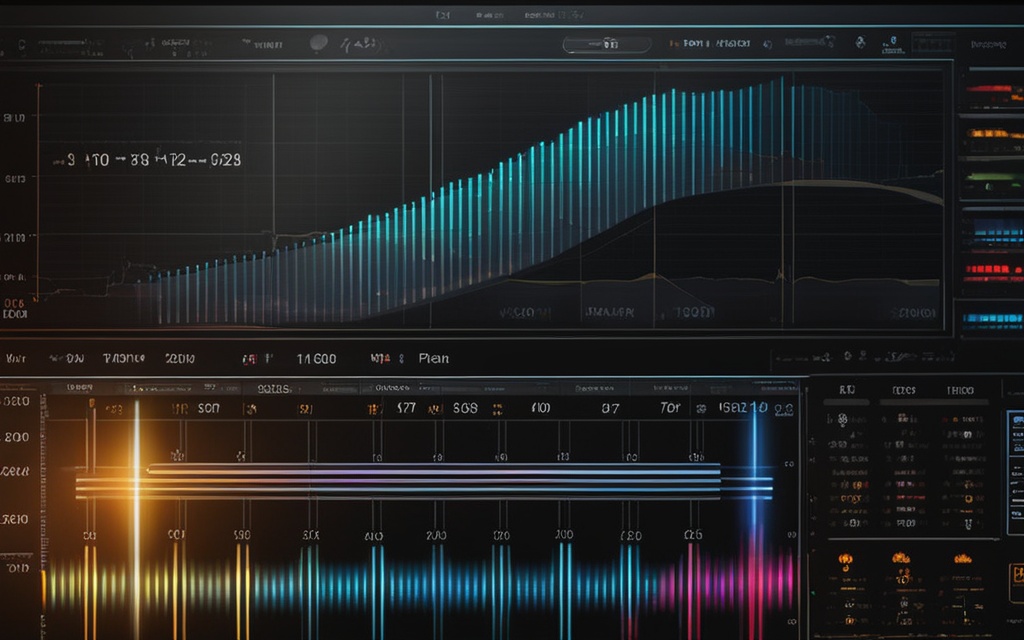Table of Contents
The CPU is known as the computer’s “brain”, creating heat while working on tasks. Knowing the best CPU temperature helps your computer perform better for longer. Checking the temperature regularly prevents your CPU from overheating. This can stop performance issues and even damage. To learn how to check your CPU temperature, go to this resource.
Key Takeaways
- Understanding your CPU’s ideal operating temperature is crucial for performance.
- Regular checks help prevent CPU overheating and system failures.
- Optimal temperature ranges for CPUs vary depending on usage.
- Utilising software tools can simplify temperature monitoring.
- Being aware of the impacts of dust and cooling solutions is essential for maintenance.
Introduction to CPU Temperatures
The CPU’s temperature is crucial for it to work well and last long. It is important to keep it within a safe range to avoid overheating. Overheating can slow the CPU down or even break it. CPUs should be between 30°C and 40°C (86°F to 104°F) when not doing much. When working harder, temperatures can go between 60°C to 70°C (140°F to 158°F)1. Knowing these numbers helps in keeping the CPU at its best without it getting too hot.
Different things can make CPU temperatures change. The weather, how the computer keeps cool, and the work it does can affect it. Heavy tasks like games or editing videos can make the CPU hotter, up to 70°C (158°F) to 80°C (176°F)1. Although this is okay, it’s important to keep an eye on it. By checking the CPU with programs like Core Temp or through the computer’s BIOS/UEFI, issues can be spotted early. This helps to keep the CPU running smoothly2.
What Is Good CPU Temperature?
Knowing the right CPU temperature helps keep your computer running well. A good CPU temperature sits within certain ideal temperature ranges. Desktop computers should hover around 120°F (49°C) when not doing much. Under a lot of stress, they should not exceed 175°F (79°C)3. For laptops, the sweet spot is between 140°F and 190°F (60°C and 88°C)3. If the temperature goes over 200°F (93°C), you might see problems or even crashes3.
Understanding Ideal Ranges
Desktops should keep cool under 120-130°F (49-54°C) when idle3. Laptops, like the MacBook Air, work fine around 140°F (60°C) and shouldn’t get hotter than 180-190°F (82-88°C) when busy3. Watching these temperatures is key. If they pass 203°F (95°C), your device can slow down to avoid overheating3.
Impact of CPU Usage
The effect of CPU load on heat is big. With easy tasks, CPUs generally stay cool. But, things like gaming or video editing can push the temperature between 60°C (140°F) and 85°C (185°F). That’s as hot as you’d want it to get4. Running too hot for too long can harm your CPU early4.
It’s important to keep things clean and airflow strong. This helps keep temperatures in check. Checking the thermal paste and making sure your computer’s fans can breathe makes a huge difference in performance.
What Temp Should CPU Run At?
Knowing the right temperature for a CPU is vital for good performance and long life. It’s important to find a balance between the CPU’s idle temperature and its temperature under stress. When not doing much, the CPU should be between 35°C to 50°C (95°F to 122°F). During heavy tasks, like playing games or editing videos, it can get hotter – between 60°C and 85°C (140°F to 185°F)4. If it goes over 85°C (185°F) for too long, it could slow down or even get damaged5.
Idle vs. Under Load Temperatures
Keeping CPU temperatures in check is crucial for the best performance. The temperature of the room can affect the CPU, which should be kept between 20°C and 26°C (68°F to 79°F)5. When the CPU isn’t being pushed hard, it should stay under 50°C. But when it’s working harder, the temperature can get close to 80°C (176°F)4, which could be risky. Watching these temperatures closely, through apps or the BIOS, helps keep the CPU in a safe range4.
How to Check CPU Temperature Effectively
It’s important to keep your CPU within a safe temperature for its best performance and long life. Knowing how to check your CPU’s temperature helps you keep an eye on your hardware’s health. You can do this in two ways: using BIOS or temperature monitoring software.
Using BIOS for Monitoring
To check your CPU temperature accurately, accessing the BIOS is a great option. When your system starts, enter the BIOS setup to see the real-time temperature. This method gives precise readings but you need to restart your computer to check the temperatures again. A normal CPU temperature is below 60°C (140°F) for most activities6.
When playing games or using demanding applications, temperatures might rise to between 70° and 85°C (158°F to 185°F)6.
Third-Party Software Tools
Third-party temperature monitoring software offers an easier way to check temperatures. Tools like Core Temp, HWMonitor, and SpeedFan provide accurate readings while you use your computer. They work in the background, so you can keep an eye on temperatures without stopping your work. These programs are especially useful for spotting temperatures over 176°F (80°C) during heavy tasks, which could cause performance problems if not addressed7.
Common Causes of High CPU Temperatures
Knowing why CPU temperatures rise is key to keeping your computer running well. Several factors can cause heat to increase. This affects how long and how well the CPU works. Issues like dust buildup, poor cooling, and overclocking are common culprits.
Dust Accumulation and Airflow Issues
Dust inside a computer can block airflow. This makes it hard for the cooling system to remove heat. Alongside high temperatures, this can cause the CPU to slow down to manage the heat. Cleaning your PC often, possibly with electric air dusters, helps avoid this. This keeps the air moving freely and keeps cooling efficient8.
Insufficient Cooling Solutions
If your cooling isn’t up to par, CPU temperatures can soar. Issues might be old heatsinks, fans not working, or not enough thermal paste. It’s vital to check and update these parts as needed. For a simpler option than liquid cooling, high-quality air coolers are good. Remember, the place of your computer in a room matters too, as it affects how well it can cool down6.
Effects of Overclocking
Overclocking boosts CPU performance but also increases heat. When pushing the CPU beyond its normal limits, strong cooling is a must. It helps handle the extra heat. Keeping an eye on temperatures and adjusting how much work your computer does are good ways to avoid overheating. It helps your computer run smoothly for longer9.
FAQ
What is considered a good CPU temperature during idle conditions?
A good CPU temperature when not in use falls between 30°C (86°F) and 40°C (104°F). This range helps keep your processor working well.
How does CPU load affect temperature?
When your CPU works hard, like during gaming or video editing, the temperature rises. It may get between 60°C to 85°C (140°F to 185°F).
What is the maximum safe temperature for a CPU?
Most modern CPUs can safely reach up to 80°C (176°F) without losing performance. However, staying above 85°C (185°F) could harm your CPU over time.
How can I monitor my CPU temperature effectively?
You can check your CPU temperature right when your computer starts, using the BIOS. Or, use software like Core Temp, HWMonitor, or SpeedFan for ongoing checks while your computer is on.
What common issues lead to high CPU temperatures?
Dust blocking airflow, not enough cooling, or bad fans can make your CPU hot. Overclocking makes it work harder and get warmer. You might need better cooling then.
What are the ideal temperature ranges for CPUs under load?
While working hard, the best CPU temperature is between 60°C (140°F) and 70°C (158°F). This range keeps things running smoothly without getting too hot.
Why is it crucial to monitor CPU temperatures regularly?
Checking your CPU temperature often is key. It stops overheating that can crash your system, slow it down, or even damage your CPU.
Source Links
- https://www.noyafa.com/blogs/knowledge-base/good-cpu-temperature – What Is A Good CPU Temperature? A Guide to Keep Your Processor Cool
- https://www.avast.com/c-how-to-check-cpu-temperature – How to Check and Monitor Your CPU Temperature
- https://www.businessinsider.com/guides/tech/what-is-a-good-cpu-temp – What is a good CPU temperature? How to make sure your computer isn’t overheating, and how to cool it down
- https://www.techadvisor.com/article/726264/whats-the-best-cpu-temperature.html – What’s the best temperature for your CPU?
- https://www.makeuseof.com/tag/pc-operating-temperatures-hot-hot/ – PC Operating Temperatures: How Hot Is Too Hot?
- https://www.pandasecurity.com/en/mediacenter/how-to-check-cpu-temp/ – How to Check Your CPU Temperature – Panda Security
- https://www.avg.com/en/signal/check-cpu-temperature – How to Check and Monitor CPU Temperature on Windows and Mac
- https://www.linkedin.com/advice/1/how-can-you-lower-your-cpu-temperature-too-high – How can you lower your CPU temperature if it is too high or overheating?
- https://community.spiceworks.com/t/what-is-a-normal-temperature-for-a-cpu-and-how-do-i-keep-it-low/948818 – What is a normal temperature for a CPU and how do I keep it low?








